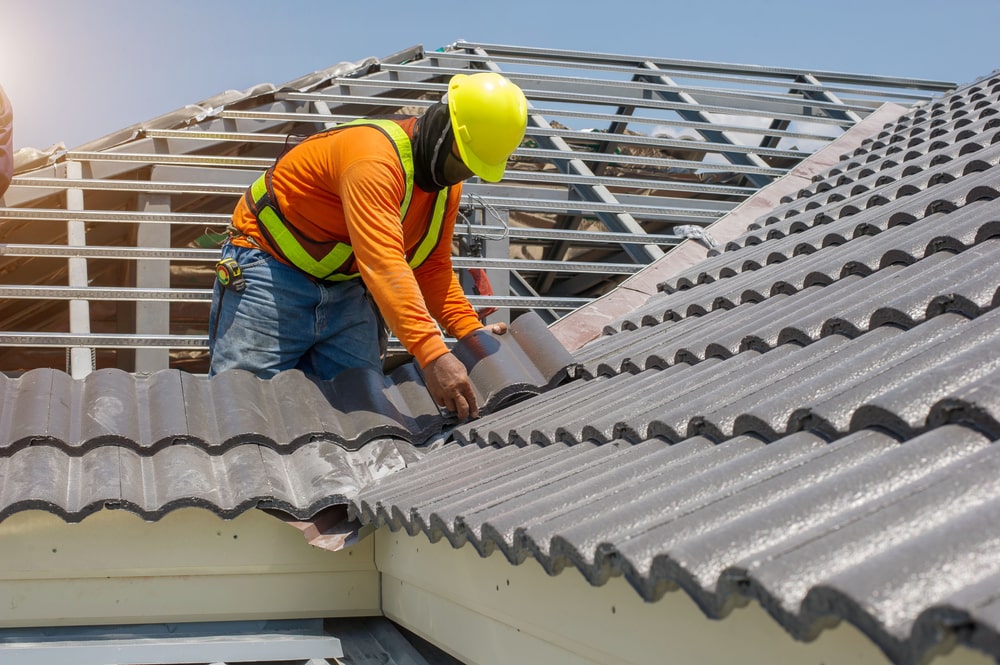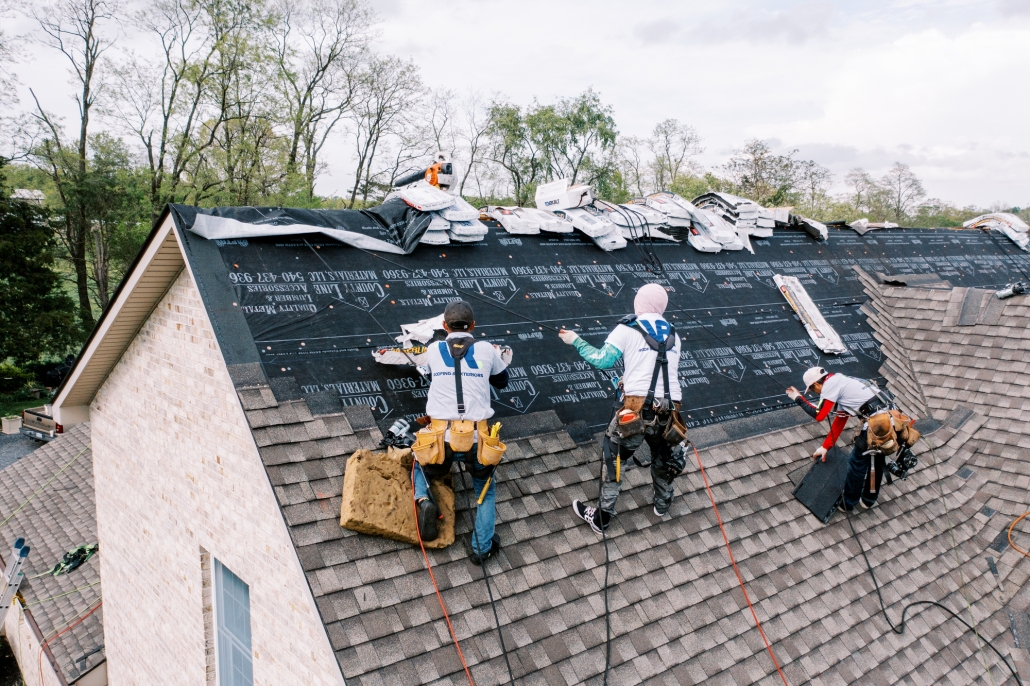Regional Insights on Roofing Companies Gainesville Florida Homeowners Prefer
Regional Insights on Roofing Companies Gainesville Florida Homeowners Prefer
Blog Article
Finest Practices for Ensuring Correct Roofing Ventilation
A well balanced consumption and exhaust vent proportion, generally 1:300, plays an essential role, with consumption vents ideally put at the reduced side of the roofing for amazing air access and exhaust vents at the peak for cozy air exit. Keeping insulation away from vents is crucial to stop air flow constraint.
Understand Air Flow Fundamentals
Appropriately recognizing ventilation essentials is important for making sure the longevity and efficiency of roof covering systems. Efficient ventilation minimizes moisture accumulation and temperature extremes in the attic, both of which can bring about considerable structural damages gradually. A well-ventilated roof covering aids in stopping usual issues such as mold growth, wood rot, and ice dams, which can compromise the stability of the roof covering materials and the underlying frameworks.
The key objective of air flow is to promote the activity of air, allowing for a consistent exchange in between the interior and outside atmospheres. This equilibrium is accomplished via a mix of consumption and exhaust vents that collaborate to keep ideal airflow. Consumption vents, generally located along the soffits or eaves, permit fresh air to go into the attic area, while exhaust vents, typically located at or near the roof ridge, enable hot, damp air to leave.
Trick variables affecting the performance of roofing air flow include correct placement, sufficient sizing, and making certain that both consumption and exhaust vents are unobstructed. Routine inspection and upkeep are essential to recognize potential clogs, damages, or ineffectiveness in the ventilation system, thus securing the roofing's performance and longevity.
Kinds Of Roof Covering Vents
Roof vents play a crucial duty in preserving effective attic room air flow and, by expansion, the general wellness of the roof system. Various kinds of roofing vents are readily available, each with special benefits customized to specific roofing demands. Ridge vents, for instance, are installed along the roof's top, allowing cozy, humid air to run away from the attic room. They supply constant air flow and mix seamlessly with the roofline, making them both efficient and cosmetically pleasing.

Soffit vents are installed under the eaves and job in tandem with roof vents to make sure a balanced consumption and exhaust system. By allowing cooler air to enter from below, soffit vents facilitate the expulsion of warm air through upper vents. Gable vents, located on the outside walls of the attic room, deal one more efficient remedy, especially in homes with gable roofings.
Assess Your Existing Air Flow

Following, think about the age and condition of your roofing products and ventilation elements. Older systems might not adhere to existing structure codes or may have worn away in time, decreasing their effectiveness. Conduct a complete evaluation to identify any type of indicators of deterioration, such as corrosion, damage, or voids that could endanger the system's performance.
Additionally, gauge the attic temperature level and moisture levels. Heats and humidity can show poor ventilation - roofing companies in gainesville florida. Utilize a hygrometer and thermostat to obtain precise analyses, contrasting them with outside problems. Persistent inconsistencies suggest possible issues that need addressing.
Setup Best Practices
Efficient installment of roofing ventilation systems is paramount for making certain ideal efficiency and long life. Appropriate installment starts with understanding the particular ventilation requirements of the Read More Here roof and the structure it covers. This includes calculating the right proportion of consumption to tire vents, usually sticking to the 1:300 regulation, which stipulates one square foot of air flow for every single 300 square feet of attic room floor area.

The positioning of vents is just as important. Intake vents should be installed at the roofing's lower side, frequently in the soffits, to permit cool air to get in. Exhaust vents, on the other hand, must be mounted near or at the roof covering's height to facilitate the exit of warm, wet air. This creates an all-natural airflow that aids preserve temperature level and moisture balance within the attic space.
Seal all vent connections thoroughly to stop air leakages and potential water infiltration. Usage top quality materials and adhere to manufacturer standards to ensure sturdiness and performance. Furthermore, integrating ridge vents with baffles can substantially boost airflow effectiveness by avoiding wind-driven rain and snow from going into the attic room.
Inevitably, specific installation of roofing ventilation systems minimizes possible concerns such as mold development, ice dams, and architectural damages, making certain the roofing system's honesty and the structure's total wellness.
Normal Maintenance Tips
Uniformity in upkeep techniques is essential to making sure the long-term efficiency of roofing air flow systems. During these inspections, guarantee that vents are free of particles, nests, and other obstructions that can hinder air flow.
Use a soft brush or a vacuum cleaner to get rid of dust and particles from intake and exhaust vents. Be mindful not to damage the air vent displays or louvers during the procedure.
Appropriate insulation is just as important. Make sure that attic insulation does not obstruct the vents, as this can severely limit air flow. Rearrange or change it to maintain a reliable obstacle. if any kind of insulation has actually changed or resolved.
Finally, replace any type of damaged or missing out on components immediately. Damaged vents, fractured tiles, or shabby blinking can all contribute to poor air flow and needs to check these guys out be dealt with immediately. Regular maintenance guarantees that the roof air flow system operates optimally, therefore prolonging the life-span of the roof covering itself.
Final Thought
Making sure proper roof covering air flow is extremely important for preserving the performance and sturdiness of a roof. Adherence to the 1:300 intake and exhaust vent proportion, combined with the strategic positioning of vents, is essential. Normal semiannual inspections, particles cleaning, and guaranteeing insulation does not obstruct air flow are crucial techniques. Carrying out these best practices will certainly foster a well-ventilated roof, thus mitigating possible issues connected to moisture build-up and extreme heat, ultimately prolonging the roof's life-span.
A well balanced consumption and exhaust vent proportion, generally 1:300, plays a critical duty, with intake vents ideally put at the reduced side of the roofing for amazing air access and her comment is here exhaust vents at the top for warm air departure. Consumption vents, generally located along the eaves or soffits, enable fresh air to get in the attic room room, while exhaust vents, frequently located at or near the roofing ridge, allow warm, moist air to leave.
Soffit vents are installed under the eaves and work in tandem with roofing vents to make certain a well balanced intake and exhaust system. By enabling cooler air to get in from below, soffit vents facilitate the expulsion of hot air through upper vents. Adherence to the 1:300 intake and exhaust vent ratio, coupled with the critical positioning of vents, is necessary.
Report this page